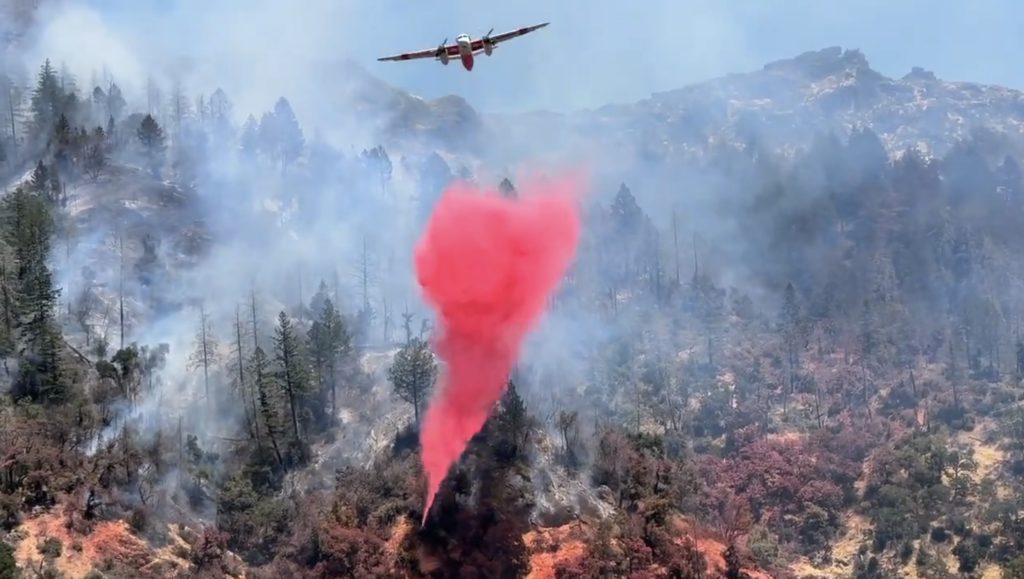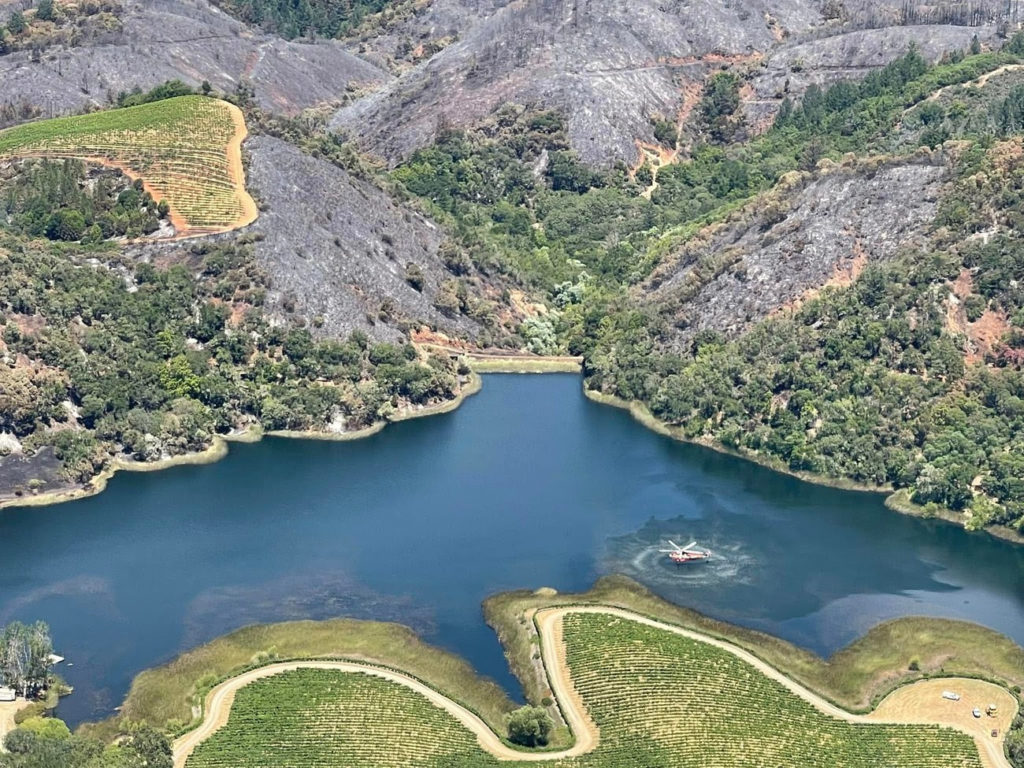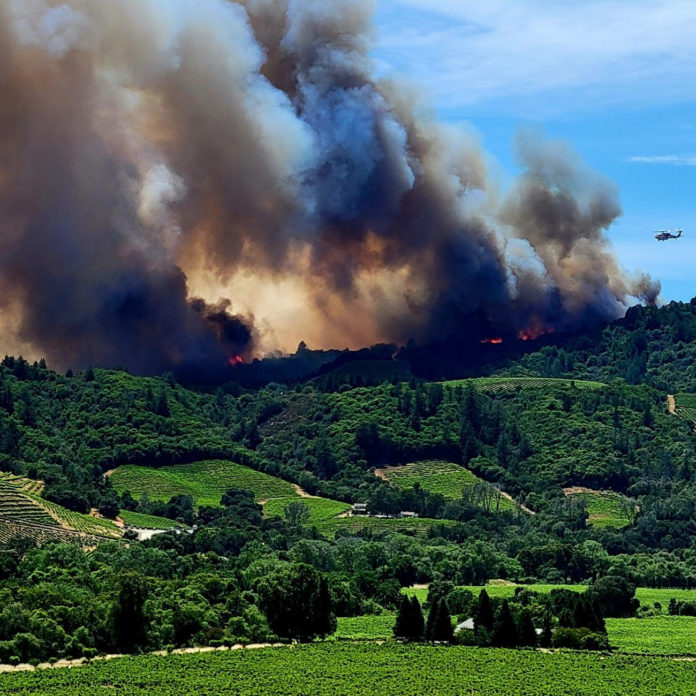It started in early June, when little grass fires started popping up in Sonoma and Napa counties — along with the not-so-little, 60-acre Crystal Fire near St. Helena. At that time, weather and fire officials were still predicting a mild-to-medium 2024 fire season.
But it soon became clear that all the grass and brush that had fattened up during the extra-wet winter were drying out fast, and combusting big. “The grass this year is just burning really well,” Chief Marshall Turbeville of the Northern Sonoma County Fire Protection District told me earlier this month. (And it’s not even “as dry as it’s going to be in July and August” yet.)
Then came two whoppers within Cal Fire’s Sonoma-Lake-Napa Unit, forebodingly early in the season: The 1,200-acre Point Fire in the Dry Creek Valley outside Healdsburg on June 16 (near where I live), and the 19,200-acre Sites Fire in Colusa County, northeast of Clear Lake, on June 17.
Within just a few days, thanks in large part to Point and Sites, more acres had burned within our local Cal Fire division — covering Sonoma, Napa, Lake, Colusa, Solano and Yolo counties — than in the previous three summers combined, unit leaders said.
Hundreds of rural Healdsburg residents had to evacuate, along with hundreds more staff and visitors at world-famous wineries. But thanks to strong, smart firefighting and some luck with the wind, the Point Fire ended up being much less destructive than we all feared. In the end, three houses and seven other structures burned down, according to Cal Fire’s incident map — plus one other home a mile-and-a-half from the burn zone, outside the evacuation line, which may have caught a high-flying ember. (The people who lived there are OK, by some miracle; crazy story.)
One winery boss, from Raymond Burr Vineyards, said in an interview with the Press Democrat: “Cal Fire was so impressive. They came here with an army. They came here with crew after crew.”
In the two weeks since then, it’s been a game of grass-fire whack-a-mole for Cal Fire and the smaller local fire agencies that dot the region.
There was the (confusingly named) 5-acre Wild Fire near Angwin in east Napa County, and the 6-acre Preston Fire near Cloverdale in northern Sonoma County — both nipped in the bud by firefighters. Small fires have been breaking out in more urban areas, too — like a barn fire at the Petaluma fairgrounds, and a compost fire at the beleaguered Upper Valley Disposal and Recycling center in St. Helena.
And, just this week, another potential catastrophe came in the form of the fast-growing Toll Fire just north of Calistoga. Rural residents evacuated after it broke out yesterday morning, preparing for the worst — but again, it looks like Cal Fire already managed to stop forward progress and lock it down between 40 and 50 acres.


“Thanks to a strong initial attack from both air and ground resources, we were able to keep this fire contained with no reported property damage,” Cal Fire officials tweeted last night.
Local photojournalist Kent Porter, always at the scene, took some wild pics yesterday of firefighting planes dropping neon-pink fire retardant on country homes along a ridge line threatened by the Toll Fire, in the Palisades area of Mount St. Helena. (The same substance that may have destroyed a bunch of wine grapes at Lago di Merlo Vineyards in the Point Fire, according to the PD.)
Anyway, it seems like there are two trends we’re seeing so far this season. 1) The combo of a super-wet winter and a super-hot, super-windy early summer is making for explosive fire conditions. 2) Local firefighters are more equipped than ever to handle these outbreaks, with loads more funding and personnel and knowledge and tech than 5 or 10 years ago.
After the Point Fire, one of our Sonoma County supervisors, Lynda Hopkins, went up in a helicopter and posted some pretty epic aerial footage from her trip. Lynda admired the “ridgetop fuel breaks” that helped halt the forward progress of the fire, and raved about the high-tech aircraft and cameras used in the fight: “We watched in real time as a CAL FIRE helicopter loaded water and completely extinguished a smoldering, smoking hot spot within the fire perimeter,” she wrote. “Henry-1’s infrared camera was able to both identify the hot spot and provide confirmation it was extinguished.”


At the same time, the art of battling nature is still a total crapshoot sometimes, and when the wind is blowing hard enough, many of these tactics and gadgets go out the window. Especially when multiple fires are burning at once and firefighting resources get stretched thin. So, as Cal Fire keeps saying — pack your “go bag,” “know your zone” and all that jazz!
Firefighters also corralled a nearly 500-acre wildfire called the Denverton Fire down near the Travis Air Force Base in Solano County yesterday, FYI.
And another small grass fire the day before in Santa Rosa, near a local elementary school, may have been caused by illegal fireworks, according to the Press Democrat.
From the story: “A Santa Rosa man is suspected of lighting a firework that caused a vegetation fire near a local elementary school Monday afternoon, police said Tuesday. Salvador Castillo Lopez, 20, was arrested on suspicion of misdemeanor unlawfully causing a fire, according to the Santa Rosa Police Department. The fire was reported just before 2:30 p.m. in the 2000 block of Moraga Drive in southeast Santa Rosa. The scene is in a field bordered by Kawana Springs Elementary School, North Bay Children’s Center and homes on Tokay Street. Firefighters ‘quickly extinguished a fire that burned a 2,500-square-foot area of mowed grass,’ police said. Investigators believe the suspect ignited a firework inside PVC pipe and it launched in an opposite direction then was intended.”











